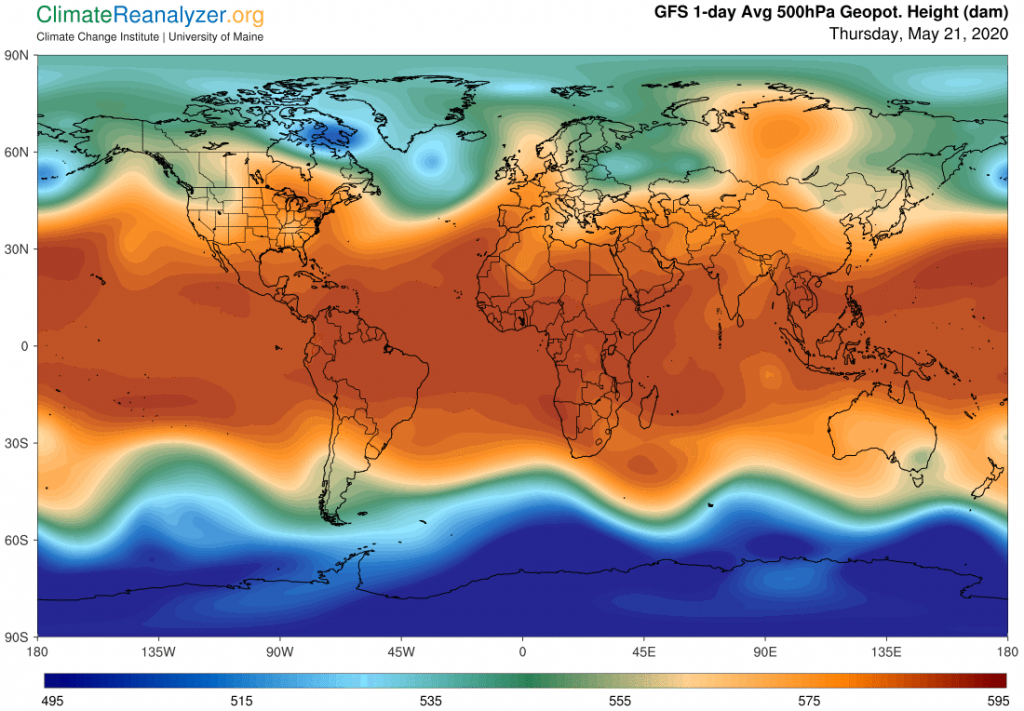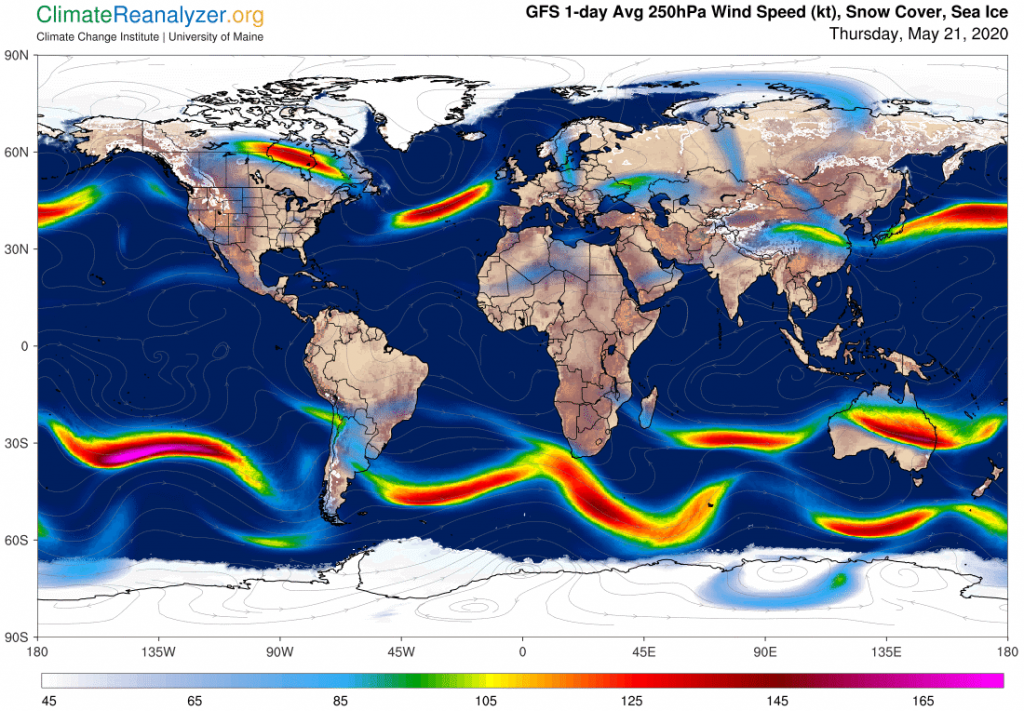I want to show you a really neat way to trace out the locations of all the major jetstream pathways and to see good evidence of the circumstances that cause strong and active high-speed jets to be positioned in the places where they are observed. You might first want to review my letter from two days ago which discussed the rules for determining pathway locations. Today there will be added discussion about the specific places where strong, intermittent bursts of wind jets are created. This exercise is based on the two images that are shown next. It makes no difference what day they are set up because the same rules always apply. The neat part is to set them up in different windows, allowing their links to be side by side in the toolbar, so you can easily toggle back and forth while keeping your eyes fixed on any chosen spot. It’s best to make use of the “View image” tool in setting up each window in order to have a stable, maximized image.


The rules for matching jetstream pathways to specific color-coded pressure change contours are virtually infallible, but there is always something of variance to be learned and recognized. The outside perimeter tracks along the borders of the maroon-shaded tropical zone sometimes show a bit of variation when the isobars at this junction are spread most widely apart. The middle track, represented by the thin yellowish line, and inner track, by the thin blue line, ordinarily do not have this problem except that in a few places they may bleed out enough to cause a small amount of apparent irregularity.
Now to focus on the rules behind the strengthening of pathway winds, whereby the high-speed jets that appear are created. The rule that is most important develops whenever the middle track moves into close proximity with either one of the others, a common happening, all because the air pressure contours seldom stay in any one place or shape for very long. Whenever two tracks start merging their existing wind speeds do not simply average out; rather, the combination always seems to have a way of causing mutual acceleration. Moreover, the closer together they get the greater the acceleration. Sometimes all three tracks are involved in one really big acceleration.
Aside from these mergings, there are times when an individual track will do some accelerating on its own, based on a circumstance that has caused its isobars to tighten up more closely than usual. This is most likely to happen on the loosely knit outside perimeter track. In today’s reality such an occurrence is more likely to be observed in the southern hemisphere than in the north. As an added thought, the implication is that in the northern hemisphere neither the perimeter track nor the broken-up inner track is seen pulling its usual weight with respect to hindering the movement of high-altitude airwater streams, leaving the middle track alone to do most of the work. That’s a simple explanation for the big differences now observed in the amplitude of warming in each of the polar regions.
In closing, I just cannot say enough about the value of the entire set of Climate Weather Maps and the way they are organized, thanks to the University of Maine. The ability to easily toggle back and forth between any two or more images provides countless opportunities to make discoveries, or to provide food for thought, plus the seeing of possibilities that call for further investigation. I would certainly encourage more people to get involved in the activity in a regular way.
Carl